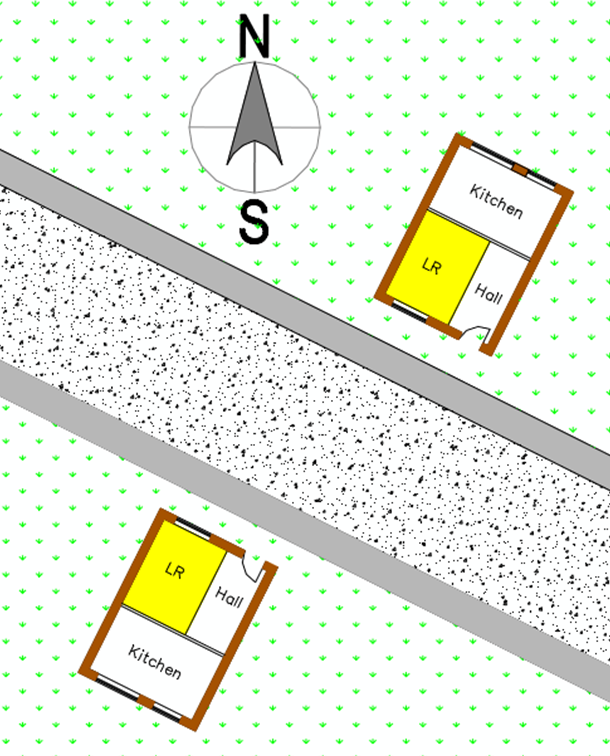Within the constantly changing landscape of real estate development, the concept of Right to Light has appeared as a critical consideration for designers, builders, and urban planners alike. Comprehending what a Right to Light survey entails is essential for everyone involved in building projects, particularly in crowded urban environments. This article delves into the significance of Right to Light surveys, investigating their role in safeguarding the interests of both developers and neighboring properties, while also looking at noteworthy case studies that highlight best practices and outcomes.
As we navigate through the challenges of property development, the implications of Right to Light extend far beyond simple legalities. They play a crucial role in planning permissions, influencing aesthetics and project viability. With increasing browse around this website and a push for new builds, the importance of conducting thorough Right to Light assessments cannot be overstated. In this article, we will reveal the history and legal basis of Right to Light in the UK, discuss the survey process, and illustrate how proactive measures can help avoid legal disputes, ultimately promoting harmonious relationships within the neighborhood.
Grasping the Right to Light
The right to light is a legal principle that permits property owners to enjoy natural light in their buildings from designated windows. This right is established under common law and pertains to properties that have enjoyed light through specific openings for a continuous period, typically more than 20 years. The principle seeks to protect the enjoyment of light as a critical aspect of living and working spaces, ensuring that construction projects do not unjustly obstruct light access to neighboring properties.
Understanding the relevance of right to light is crucial for property developers, as it can greatly impact planning permissions and project feasibility. If a proposed development violates a neighboring property's right to light, it can lead to complaints, setbacks in approvals, and potentially costly legal disputes. Developers must consider these rights early in the planning stages to avoid complications that might arise afterwards or even stop the project altogether.
Moreover, the implications of right to light go beyond mere access to sunlight; they influence design choices, community relations, and long-term property values. As urban areas become more crowded and the race for building opportunities intensifies, awareness and attention of right to light issues will grow increasingly crucial. Engaging in a right to light assessment can help reveal potential risks and guide developers in creating solutions that satisfy legal requirements while also addressing the concerns of neighboring properties.
Assessment Procedure and Methods

Light Access surveys are crucial for evaluating potential light blockages and confirming compliance with regulatory guidelines. The assessment process starts with location evaluation, where surveyors assess the existing light conditions and topography around the site. This evaluation usually includes calculating sunlight exposure at various intervals of the day and noting any obstructions that may affect light availability to adjacent properties. Gathering both qualitative and quantitative data during this phase is important for an accurate assessment.
Once the preliminary data is gathered, surveyors employ specialized equipment and methods to analyze the effect of any proposed developments on light availability. Computer software is commonly employed to create detailed 3D models, which simulate how light interacts with the buildings in question. These models allow surveyors to clearly demonstrate potential infringements on light rights and provide a complete evaluation. The application of BRE guidelines guarantees the survey meets professional standards for daylighting evaluations.
The result of the assessment procedure is typically a Daylight and Sunlight report, which synthesizes the findings and provides suggestions for mitigating any identified issues. This report not only supports the builder in gaining planning approval but also serves as a proactive approach to avoid conflicts with adjacent property owners. By clarifying the implications of right to light in the framework of the development, both developers and property owners can navigate the challenges of city planning with assurance.
Examples and Practical Applications
In studying successful outcomes of right to light surveys, one notable case involved a developer in a crowded London neighborhood. At first, facing objections from neighboring homeowners concerned about reduced daylight due to a planned high-rise, the developer commissioned a thorough right to light survey. The results revealed potential infringements and permitted a redesign that addressed the neighbors' concerns, ultimately leading to a successful planning application that balanced both development goals and light rights.
A different notable case comes from a project involving historic buildings in a city center. The builder had ambitions to convert an existing structure into luxury apartments but faced resistance from adjacent property owners claiming rights to light were being compromised. By engaging a right to light expert early in the process, the developer utilized 3D modeling and adhered to BRE guidelines to demonstrate that light levels for neighbors would remain compliant. This proactive approach not only facilitated smoother negotiations but also highlighted the importance of integrating right to light assessments in the early stages of development.
In a separate situation, a residential extension sparked a dispute when neighbors objected, alleging that the new structure would block significant sunlight. The homeowner opted for a right to light survey which revealed the degree of potential impact. Armed with concrete data, the homeowner engaged in positive discussions with their neighbors to reach an amicable compromise that modified the design of the extension while preserving light access. This case highlights how effective communication and well-informed strategies can reduce conflicts and align interests in right to light matters.
